| The Collection Browser of the Archimedes Project | ||
|
|
||
|
The Libro degli artifizii spiritali over di fiato (1582) is the first Italian translation of Hero's Pneumatics. It was produced by Oreste Vannoccio Biringuccio at the request of Bernardo Buontalenti, chief engineer of the Tuscan Grand Duke. He also translated into Italian Piccolomini’s paraphrase of Aristotle’s Mechanical Questions in the same year. Oreste Vannoccio Biringuccio was the nephew of Vannoccio Biringuccio, who was famous for his De la pirotechnia (1540). The translation was produced mainly on the basis of the Latin editio princeps of Commandino, published in 1575. However, the author also used a Greek manuscript of Hero’s Pneumatics, at that time preserved at the Vatican.
The manuscript of Oreste Vannoccio consists of a dedication to the reader, a theoretical commentary of Vannoccio (who disputes Hero’s principles in favor of Aristotle’s which are concerned with the explanation of the functioning of pneumatic devices) Hero’s theoretical introduction, and the description of 78 devices. From the Greek manuscript, which has not been identified to date, the author translated an additional description of the Heronian hydraulic organ. Moreover, Oreste Vannoccio added a third description of a hydraulic organ and, specifically, of the garden of Tivoli, constructed some years earlier by the French engineer Claudio Venrdij. The existence of this manuscript was already recognized in 1899 by Wilhelm Schimdt, author of what remains still the most philologically relevant reconstruction of the Heronian text, although it has not been published or analyzed until now. This first Italian translation of Hero’s Pneumatics is particularly relevant because of the theoretical commentaries it contains. These would later open a major theoretical debate among Italian engineers about the nature of air and heat, strongly influencing the investigations of scientists such as Galileo. This manuscript has been made freely available on the Internet thanks to the collaboration of the Biblioteca degli Intronati of Siena. The transcription is made in XML format (downloadable file) and presented using technology from the ECHO Project environment. The work on the transcription took place at the Max Planck Institute for the History of Science and was supported by the CRC 644 "Transformation of Antiquities." The transcription was produced by Matteo Valleriani, corrections were made by Tom Werner, and technical and linguistic support provided by Brian Fuchs. Draft version (October 2006). For suggestions and corrections please e-mail valleriani@mpiwg-berlin.mpg.de  Source information Source information
|
Historical Sources Related to Design and Construction of the Garden of Pratolino | |
|
|
||
|
The Libro degli artifizii spiritali over di fiato (1582) is the first Italian translation of Hero's Pneumatics. It was produced by Oreste Vannoccio Biringuccio at the request of Bernardo Buontalenti, chief engineer of the Tuscan Grand Duke. He also translated into Italian Piccolomini’s paraphrase of Aristotle’s Mechanical Questions in the same year. Oreste Vannoccio Biringuccio was the nephew of Vannoccio Biringuccio, who was famous for his De la pirotechnia (1540). The translation was produced mainly on the basis of the Latin editio princeps of Commandino, published in 1575. However, the author also used a Greek manuscript of Hero’s Pneumatics, at that time preserved at the Vatican.
The manuscript of Oreste Vannoccio consists of a dedication to the reader, a theoretical commentary of Vannoccio (who disputes Hero’s principles in favor of Aristotle’s which are concerned with the explanation of the functioning of pneumatic devices) Hero’s theoretical introduction, and the description of 78 devices. From the Greek manuscript, which has not been identified to date, the author translated an additional description of the Heronian hydraulic organ. Moreover, Oreste Vannoccio added a third description of a hydraulic organ and, specifically, of the garden of Tivoli, constructed some years earlier by the French engineer Claudio Venrdij. The existence of this manuscript was already recognized in 1899 by Wilhelm Schimdt, author of what remains still the most philologically relevant reconstruction of the Heronian text, although it has not been published or analyzed until now. This first Italian translation of Hero’s Pneumatics is particularly relevant because of the theoretical commentaries it contains. These would later open a major theoretical debate among Italian engineers about the nature of air and heat, strongly influencing the investigations of scientists such as Galileo. This manuscript has been made freely available on the Internet thanks to the collaboration of the Biblioteca degli Intronati of Siena. The transcription is made in XML format (downloadable file) and presented using technology from the ECHO Project environment. The work on the transcription took place at the Max Planck Institute for the History of Science and was supported by the CRC 644 "Transformation of Antiquities." The transcription was produced by Matteo Valleriani, corrections were made by Tom Werner, and technical and linguistic support provided by Brian Fuchs. Draft version (October 2006). For suggestions and corrections please e-mail valleriani@mpiwg-berlin.mpg.de  Source information Source information
|
Manuscript Collection of the Biblioteca degli Intronati di Siena | |
|
|
||
 Barocius, Franciscus, Heronis mechanici liber,
Barocius, Franciscus, Heronis mechanici liber, 
